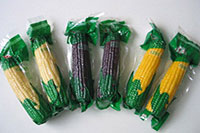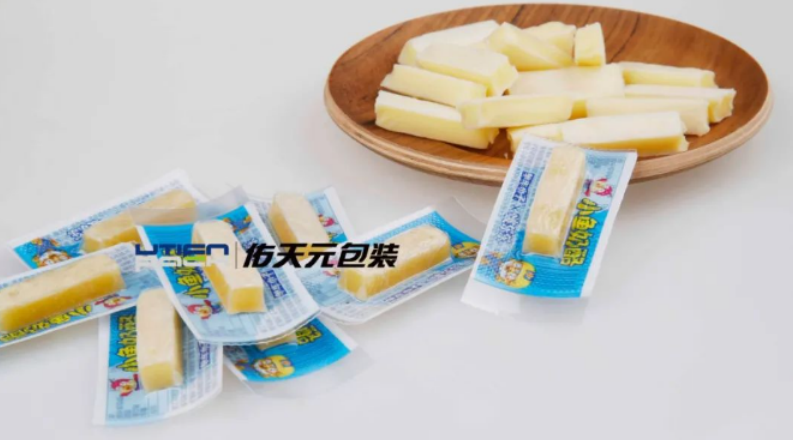- WhatsApp: +86 13606526028
- Email: contact@utien.com
In the food and beverage industry, packaging plays a vital role in ensuring the safety, freshness, and appeal of products. Custom food packaging is no longer just about protecting goods during transport; it has evolved into a powerful tool for enhancing consumer experience, improving product shelf life, and reinforcing brand identity. Packaging is often the first point of contact a consumer has with a product, making it an essential aspect of marketing and customer engagement. Customization allows brands to create unique, functional, and eco-friendly packaging solutions tailored to their specific needs. By selecting the right materials and designs, businesses can preserve food quality, reduce waste, and create a lasting impression.
One of the primary advantages of custom food packaging is its ability to protect food products from external contaminants. Custom packaging is designed to suit the specific characteristics of different food types—whether it's fragile produce, perishable meat, or delicate bakery items. With the use of high-quality materials and specialized sealing methods like vacuum or tray sealing, custom packaging provides an airtight barrier that shields food from bacteria, moisture, and oxygen. This significantly reduces the risk of spoilage, contamination, and product damage during transport and storage, ultimately ensuring consumer safety.
Packaging that is tailored to the unique requirements of each food product can also help extend shelf life. For instance, Modified Atmosphere Packaging (MAP) and vacuum skin packaging (VSP) work by altering the internal environment of the package to slow down oxidation and microbial growth. By controlling factors like oxygen levels and moisture content, these packaging methods can extend the freshness of food products by up to 50%, minimizing waste and reducing the need for preservatives. Custom solutions like these enable businesses to provide fresher products to consumers while lowering costs through reduced spoilage.
Beyond functionality, custom food packaging serves as a powerful branding tool. With the right combination of colors, logos, and creative design, packaging can make products stand out on store shelves, attracting attention and driving consumer purchases. Consumers often associate packaging design with quality, so a well-designed package can convey a sense of professionalism and reliability, building brand loyalty over time. Moreover, unique packaging designs can also help consumers easily identify your product in a crowded market, fostering trust and repeat purchases.
By leveraging the benefits of custom packaging, businesses can protect their products, engage consumers, and create a sustainable, cost-effective solution that enhances both product quality and brand presence.

Custom food packaging solutions are designed to meet the unique needs of different food products while optimizing storage, transportation, and presentation. Below are some key packaging methods that offer efficiency, protection, and sustainability.
Benefits: Tray sealing is ideal for fresh produce, meats, and ready-to-eat meals. It helps preserve the freshness of food by creating hermetic seals, which prevent contamination and spoilage.
Materials Used: Common materials for tray sealing include PET, CPET, PP, Aluminum, and paper-based substrates. These materials are chosen for their ability to withstand high pressure while providing airtight seals.
Environmental Impact: Tray sealing uses less plastic compared to traditional clamshell packaging, making it a more eco-friendly solution. It reduces material usage while still offering the same level of protection for food products.
Benefits: MAP extends the shelf life of products by up to 50%. It works by adjusting the internal atmosphere of the packaging, reducing spoilage and oxidation. This makes it particularly useful for fresh meats, seafood, and produce.
How MAP Works: MAP uses gas flushing techniques, replacing the oxygen inside the package with gases like nitrogen and carbon dioxide. This prevents the growth of harmful microbes, reduces oxidative discoloration, and slows down the deterioration of food quality.
Environmental Impact: MAP is a sustainable option because it can extend the shelf life of perishable goods, reducing food waste. It also helps optimize transportation and storage by reducing the frequency of restocking.
Benefits: VSP is ideal for products that require an airtight, tight seal for protection, such as meats, poultry, and seafood. It helps maintain the product's visual appeal and freshness, reducing the risk of contamination during transit.
How VSP Works: A high-barrier plastic film is applied over the product under vacuum conditions, tightly wrapping it like a second skin. This tight seal prevents exposure to air, moisture, and contaminants, effectively safeguarding the product from spoilage.
Environmental Impact: VSP uses minimal materials compared to traditional packaging, reducing excess waste. It also supports sustainability by extending product shelf life, thus contributing to food waste reduction.
Benefits: Compress packaging machines are designed to reduce the size of packaged items, maximizing storage capacity and minimizing shipping costs. These machines are particularly effective in streamlining the packaging process, reducing space usage in warehouses, and lowering overall shipping expenses.
How Compress Packaging Machines Works: These machines use compression technology to tightly pack products, reducing their size and volume. This process makes the products more compact and easier to store and transport. Compression machines are efficient and fast, allowing businesses to optimize both storage and shipping.
Environmental Impact: Compress packaging machines help reduce the amount of packaging material used by minimizing the size of the packages, leading to less waste. They also support sustainability by optimizing transportation efficiency, reducing fuel consumption, and lowering carbon emissions.

When developing a custom food packaging solution, several key factors must be considered to ensure the packaging meets the specific needs of the product and the business. These include material selection, functionality, and design elements that affect both performance and consumer perception.
The first step in the packaging design process is to understand the unique characteristics of the product. Factors such as size, shape, weight, and storage requirements all play a role in determining the most suitable packaging type. For example, liquid products may require specialized containers with tight seals to prevent leakage, while dry goods may only need lightweight, flexible packaging.
Furthermore, it's crucial to consider the shelf life and storage conditions of the food product. Products requiring refrigeration or freezing will need packaging materials that offer insulation and moisture control. Identifying these specific needs helps ensure that the chosen packaging method enhances product safety and minimizes waste.
The choice of materials is fundamental in custom food packaging. The materials need to offer protection while also being cost-effective and environmentally responsible. Common packaging materials include plastic, paper, aluminum, and biodegradable films.
For example, plastics are often chosen for their durability and flexibility, but with growing environmental concerns, eco-friendly materials like biodegradable plastics, recycled paper, and compostable films are becoming more popular. It’s important to balance functional requirements—such as moisture and oxygen barriers—with sustainability goals. Selecting the right material can also help reduce packaging costs in the long run, especially for large-scale production.
Packaging design is a critical aspect of custom packaging because it reflects the brand’s identity and influences consumer decision-making. Beyond just protecting the product, packaging is a key marketing tool that can differentiate a brand in a crowded market.
Custom packaging design should include elements such as brand logos, color schemes, and product information. A well-designed package can communicate quality and attract attention on store shelves. Additionally, functionality should not be overlooked. Packaging should be easy to open, resealable, and convenient for the consumer. These elements improve the overall user experience and foster brand loyalty.
Developing custom food packaging involves several steps that ensure the final product meets both functional and branding requirements. The process includes defining packaging needs, selecting materials, and testing prototypes before moving to full-scale production.
The first step in the packaging development process is to clearly define the requirements of your product. Consider aspects such as size, shape, and fragility of the food. For instance, delicate items like fresh berries will require packaging that prevents crushing, while liquids such as sauces need leak-proof containers. Additionally, it's crucial to account for the shelf life of the product, as this will influence whether the packaging needs special features like moisture control or an oxygen barrier. Understanding these details ensures that the packaging will protect the product while maintaining its integrity throughout the supply chain.

Once the product's needs are defined, selecting the right materials is the next critical step. Packaging materials must be chosen based on the type of food, desired shelf life, and environmental factors. Plastics, paper, aluminum, and biodegradable options each have their advantages. For example, plastic films are ideal for creating airtight seals, while recycled paper may be preferred for eco-conscious packaging. It’s important to weigh factors such as product protection, consumer convenience, and environmental impact when choosing the right materials. Moreover, ensuring the materials meet relevant food safety standards is essential.
After selecting the materials, the next step is to create prototypes of the packaging design. Prototypes allow businesses to assess the packaging’s durability, fit, and aesthetic appeal before committing to mass production. During the testing phase, it’s important to evaluate how the packaging performs in real-world conditions, such as temperature fluctuations, transportation stress, and shelf life. This step helps identify any flaws or improvements needed to ensure the packaging meets both functional and branding objectives.
Developing custom food packaging comes with several challenges, from selecting materials to ensuring regulatory compliance. However, these challenges can be managed with careful planning and execution.
One of the most common challenges businesses face in packaging development is finding the right balance between cost and quality. Premium packaging materials or advanced sealing technologies can increase costs, but businesses must ensure that the packaging meets the necessary protective and branding standards. To overcome this, companies can explore cost-effective packaging materials that still provide the required functionality, such as using recyclable plastics or paper-based materials. Additionally, working with experienced packaging suppliers can help identify the most cost-efficient solutions without compromising on quality.
Another challenge in packaging development is ensuring that the selected materials are compatible with both the product and the packaging process. For example, some food items may require specific barrier properties to prevent spoilage, while others may require specialized coatings to prevent chemical reactions. To address this challenge, it's crucial to work closely with packaging suppliers who have experience in the food sector and can recommend materials that meet both food safety and performance standards.
Food packaging must comply with stringent regulatory requirements to ensure product safety. These regulations cover aspects like labeling, ingredient disclosures, and food contact materials. Businesses must stay updated on the latest regulations and ensure that their packaging meets all necessary standards. Collaborating with regulatory experts and ensuring all packaging materials are certified for food safety will help companies navigate these compliance challenges effectively.
Custom food packaging is essential for ensuring the protection, preservation, and appeal of food products. Whether using tray sealing, modified atmosphere packaging (MAP), or vacuum skin packaging (VSP), businesses can select the most appropriate packaging solution that meets the unique needs of their products. Moreover, by considering key factors such as material selection, packaging design, and brand messaging, companies can create packaging that not only safeguards their products but also stands out in the market.
By investing in custom packaging, businesses can provide consumers with high-quality products, reduce waste, and improve brand recognition, ultimately leading to increased sales and customer satisfaction. As consumer demands for sustainability and convenience continue to rise, businesses that prioritize innovative and eco-friendly packaging will gain a competitive edge, ensuring long-term success in the market.
By continuing to use the site you agree to our privacy policy Terms and Conditions.